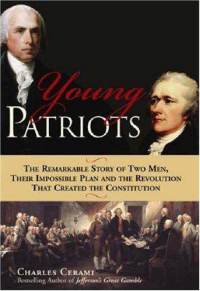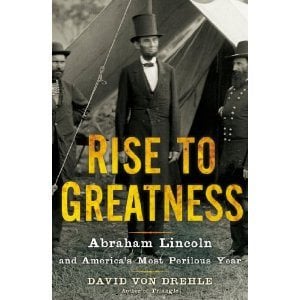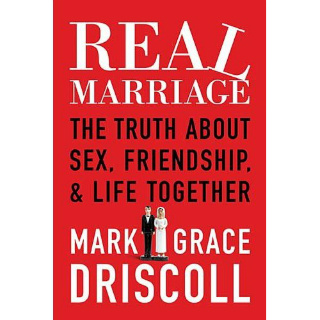Originally posted August 7, 2012
Young Patriots is a riveting account of the creation of the Constitution. No seriously, I think this stuff is interesting. The Constitution, which modern Americans take for granted almost as an afterthought, was and continues to be a revolution in the grand scope of human history.
Many modern readers assume that the Constitution was in place immediately after Americans won their independence in 1776. Not so. The Constitution wasn’t written and ratified until 1788, a full twelve years after Americans declared independence from Great Britain. In the few short years after the Americans won their independence from Great Britain and made peace in 1781, the young American nation immediately began to fray at the edges. Americans, so afraid of centralized federal power (which abuses they lived through under Great Britain), created a weak and lackluster Articles of Confederation with a single legislature. The central government was nonexistent, leaving states to do what they wanted with no uniformity. Large states (such as Virginia and Massachusetts) shoved out the smaller states when it came to lucrative trade deals. States made separate trade treaties with European nations. The southern states were already considering secession to be able to preserve their slave trade. European nations had even made offers to smaller states such as Delaware to rejoin a European nation in offer for protection. In short, the first few years of American existence were absolute chaos.
In the midst of all this, two young men (early 30s), Alexander Hamilton from New York and James Madison from Virginia joined together with a vision for a new government. They called and gained support for a convention which eventually became the Constitutional Convention that attained mythic proportions. Hamilton was a self-made immigrant who rose to fame in George Washington’s revolutionary army, and Madison was a well-to-do thinker and politician who flew under the radar of Virginia politics because he was overshadowed by stars such as Patrick Henry, George Washington and Thomas Jefferson. Yet these two inspired the convention that set the course of American history.
The book covers the process of the convention itself, which took several months. The debates and compromises made are intriguing when read (once again, yes, I really think so). The first subject they tackled was the legislature, where they assumed all of the power would reside. A compromise was made between big states and large states with the House of Representatives and Senate. The creation of the Senate kept the smaller states from walking out. As much as the northern (abolitionist-leaning states) hated it, they also made compromises to ensure the free importation of slaves for twenty years, thus keeping the southern slave states in the convention. Although Madison personally hated slavery, he knew that if the southern slaves walked out, the convention would be over and the southern states would most likely secede.
The most wide-ranging debate in the convention concerned the Executive branch. There was no real precedence for what they were creating, so options ran from a lifetime president to one chosen at random by casting lots. The modern make-up of a four-year term was a last minute compromise. The judicial branch was created quickly and easily.
Within a few weeks of being there, even the convention members themselves (fifty-five men) knew that they were a part of something special. As the framework of an entirely new constitution began to take shape, they knew that they were a part of something much bigger than themselves and felt honored to be there. After the convention, much of these men went on to live unspectacular lives. But for these few short months, they lifted themselves to another level of capability, achieving beyond themselves to produce something that has withstood the test of time.
Although we see the Constitution as near perfect, many of the delegates did not see it that way. They saw too many compromises, in one section or another. Even the ratification process (where the Constitution had to be separately ratified by each state) was arduous. Several small states ratified early because they knew it was their best shot to gain some sense of equality in this new Union. Several of the slave states threatened not to pass it because of perceived infringements on slavery, and New York barely signed it because the then-governor was absolutely opposed to any change that might lesson his power. The Constitution did pass all thirteen states, but with bare majorities, not overwhelming mandates. Nevertheless, the Constitution became the law of the land, and within a century the United States became a player on the world stage.
The two men’s unique contributions helped make the Constitution a reality. James Madison was the architect, the brains behind the Constitution. His handprints are all over the Constitution. He helped guide debates and frame arguments that made the Constitution what it is. Alexander Hamilton sparked the idea for the convention in the first place. Then, when the states were loathe to approve a Constitution that represented such radical change, Hamilton worked overtime through a series of articles and personal appearances to help sell the Constitution to the American public. Without his tireless work, the Constitution would have never been passed by the states.
LESSONS LEARNED
1. Men have the ability to rise above themselves and achieve something monumental, when inspired to do so. The constitutional convention consisted of regular men, yet they produced something far beyond any of their individual ability to produce. That’s why Jesus prays for unity for his future believers in John 17. If believers became united in purpose, what we could accomplish would amaze even us.
2. The resistance to change is universal. Even after producing a document that has been described as one of humanity’s greatest achievements, it barely won passage because of an entrenched leadership dead set on the status quo. Men like Governor Clinton of New York were willing to trade their country’s long-term success for their individual ability to hold onto whatever tainted power they have. This vice is seen too often in churches, which is why so many of them are plateaued and declining. Clutching onto power and outdated methods of ministry at the expense of reaching the next generation for Christ does nothing but condemn another generation to Hell and break the heart of God.
3. Our modern legislature could take a cue from the Constitutional Convention. One of Madison’s greatest victories came at the very beginning: he held the convention’s proceedings in secret. No publicity, no visitors allowed. The anonymity allowed the legislators to consider new ideas and compromises without being handcuffed by an angry populace at every new turn. So much of our legislation is done in public, and much of that is to keep people informed and to keep back room corruption from seeping in. But it’s also taken our legislator’s ability to wrestle with new ideas and unpopular compromises away from them. Who’s going to even bring up the idea of tampering with Social Security or Medicare when modern media would transmit that call back to his or her home district before a serious conversation could be made? Too much transparency keeps our legislators from tackling big issues, which we see today.
QUESTION: How do you think our Founding Fathers would respond to the politics of today?












